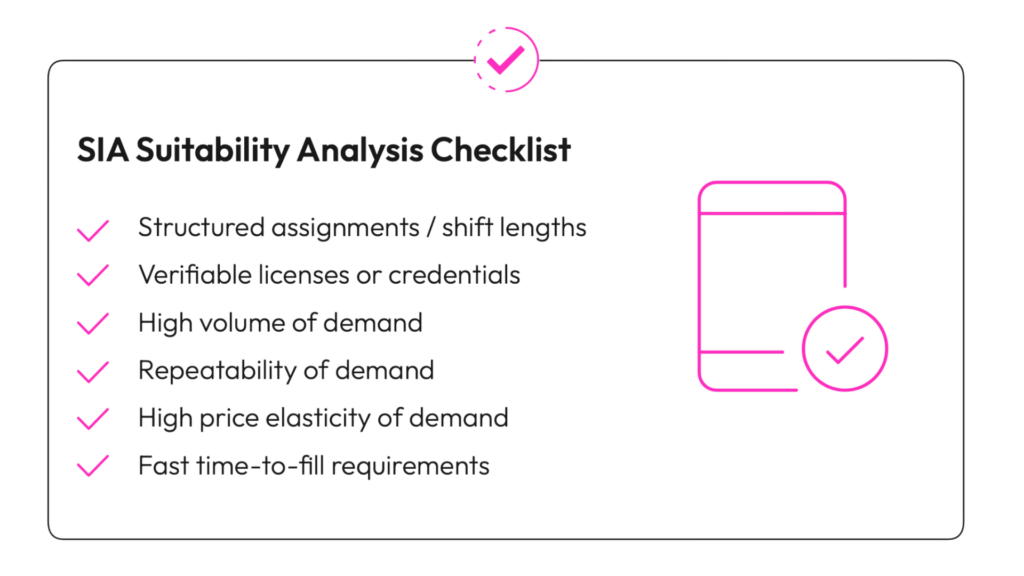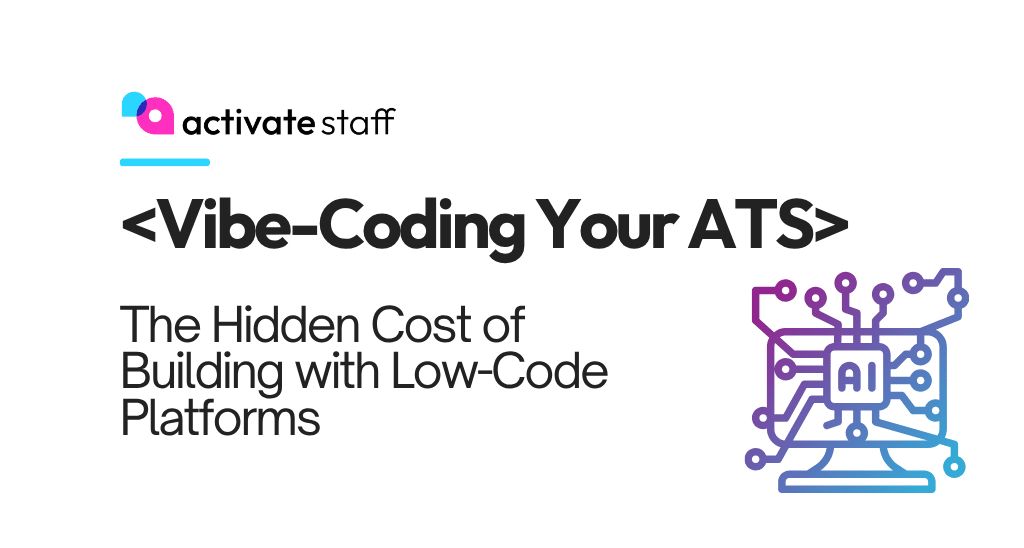Many staffing agencies are beginning to utilize temporary staffing platforms to stay ahead of the curve. Recognition of their overall benefits to the staffing industry is becoming more apparent.
We created a 3-part series to explore and define staffing platforms and share how their features empower candidates, recruiters, and clients alike and what this means for traditional staffing. In the final segment, we discuss why certain industries get more out of on-demand staffing platforms and whether building, acquiring, or buying best suits your agency’s needs.
Explore other parts in our staffing platform blog series:
Part 1 – What Are Staffing Platforms? Breaking Down The Buzz
Part 2 – Staffing Platforms: A Deep Dive Into Features And Benefits
Staffing platforms are well-suited for the commercial sector
We’re in the midst of an omnichannel convergence of traditional staffing and technology. Combining the use of staffing platform technology with in-person human interaction has the power to really set staffing firms apart. However, no two verticals within staffing are the same, and technology choices should reflect that. Commercial staffing, in particular, has many characteristics that make it a good fit for this type of technology. As per Staffing Industry Analysts (SIA), the following elements indicate a good fit for staffing platform tech:
- Verifiable licenses or credentials
- Structured assignment/shift lengths
- Volume of demand
- Repeatability of demand
- High price elasticity of demand
- Fast time-to-fill requirements

Using this matrix, you can see that commercial staffing is well suited for a staffing platform. Jobs in this industry pop up on a whim, requiring workers of various skillsets for different periods of time or hourly shifts. A staffing platform app can be of use in storing credentials for those in skilled trades and matching them to appropriate opportunities. It can also help job seekers of all skill levels to easily identify which jobs they are qualified for and pick them up within minutes.
Earlier this year, SIA found that 60% of light industrial staffing firms were struggling to keep up with the increased demand and only 18% of total respondents to the survey said they were using technology to support their firm. Staffing platforms make managing schedules for high-volume work easy and transparent.
Imagine that a worker needs to drop a shift last minute. Enabling drop shift capabilities has been somewhat controversial in staffing platforms for fear that making it easier means it will happen more often. But in reality, making it easier means that the agencies get the information they need faster and more often, and can repost the job immediately and speed up the time to refill. Firms are able to realize incredible efficiencies with the use of temporary staffing platforms, ensuring that job call-offs are minimized and fill and redeployment rates are higher.
Staffing platform surge is undeniable in healthcare
The pandemic has undeniably contributed to a sudden surge in the adoption of staffing platforms in healthcare, and it’s important to pay attention to how this has changed the game for healthcare agencies. Staffing agencies needed to figure out how to meet that rapid increase in demand and adapt to doing it all from a distance and very quickly. Firms like AYA Healthcare and CoreMedical Group stayed ahead of the curve by implementing a staffing platform. These successful early adopters of staffing tech are responsible for setting a new standard in healthcare staffing.
And now, because of these industry leaders and the experience they are able to provide, staffing platform capabilities have become firmly rooted in candidate expectations in this sector. Providing candidates with the ability to self-select shifts, communicate on-demand, and increase overall visibility into time and pay is crucial for staying ahead in the healthcare staffing industry. To learn more about what successful agencies are doing differently, check out our article on two other high-growth staffing agencies, Lead Health and Pluto Healthcare.

What are the difference between building and buy?
So you’ve decided that implementing a staffing app would be beneficial to your agency, but how do you go about doing that? Ultimately, the choice to build or buy a staffing platform is dependent on how large the staffing firm is. Building a staffing platform in-house is expensive. You have to consider the initial up-front costs and ongoing maintenance. Realistically, just getting an app to be ready for market costs a minimum of about a million dollars. Hiring, training, and retaining an in-house team to build and maintain the staffing platform are all fees that are ongoing, and combined with integrations and other moving pieces, it can make for an overall very costly venture.
Also, the largest cost now is arguably not resources at all, but time to market. It will take at least a year to build a minimum viable product and if your competitors are implementing solutions right now, you can’t afford to lose that time.

How do I buy a staffing platform?
As previously mentioned in our article “What Are Staffing Platforms: Breaking Down the Buzz”, staffing platforms as a service (SPaaS) are a type of software as a service (SaaS). With the capability of being white-labeled and configured to each customer, SPaaS is cloud-based staffing software technology that a third-party company has researched, developed, and configured for easy navigation. They manage all issues, updates, change management, and training, leaving the customer free to focus on what’s important for them (like relationship building).
Overall, SPaaS technology provides benefits such as:
- Reduced time to benefit
- Overall affordability
- Scalability and integration
- Upgrades
- Prior research and testing on usability
There are many staffing software as service companies popping up around the world so be sure to do your research and learn what you need to ask before you purchase.
Want to learn more about how we empower agencies with our SPaaS offering? Book a chat with our team.





